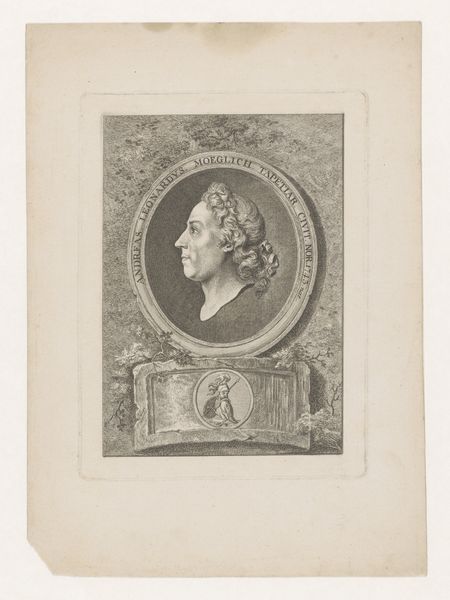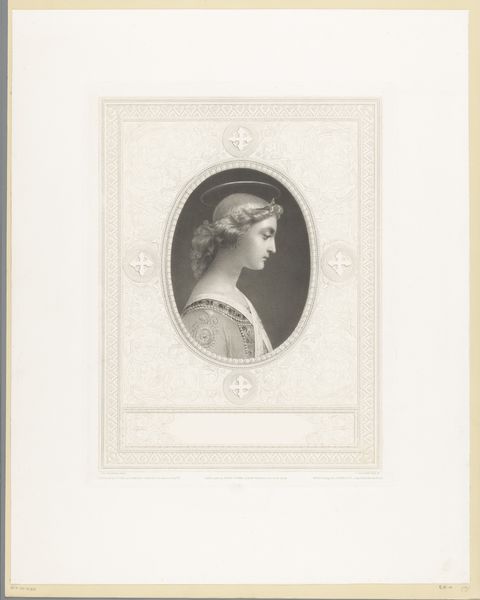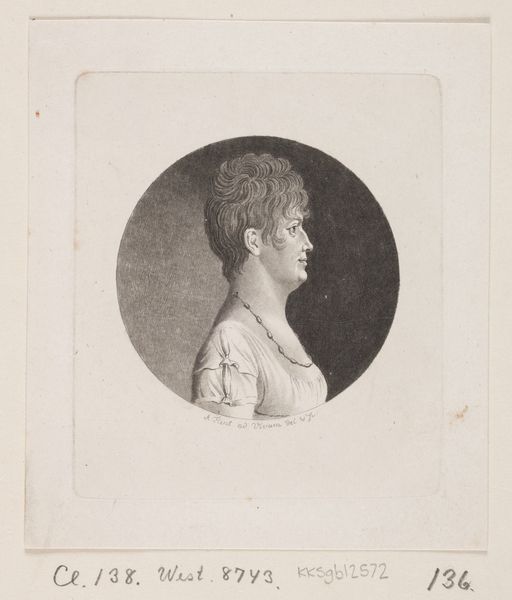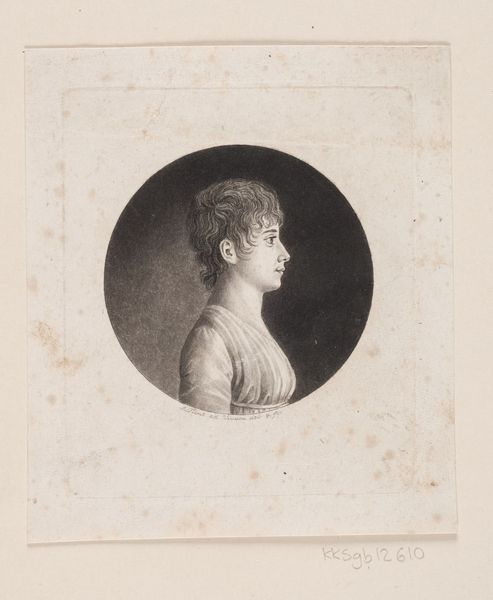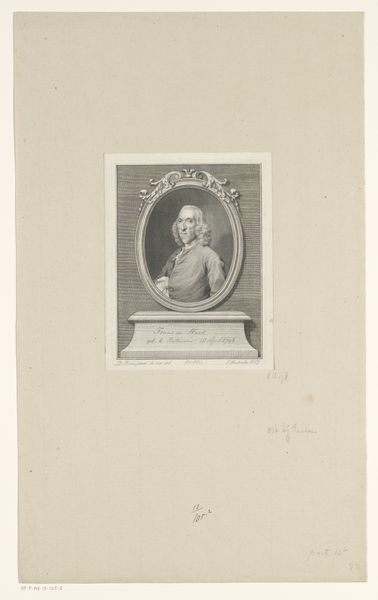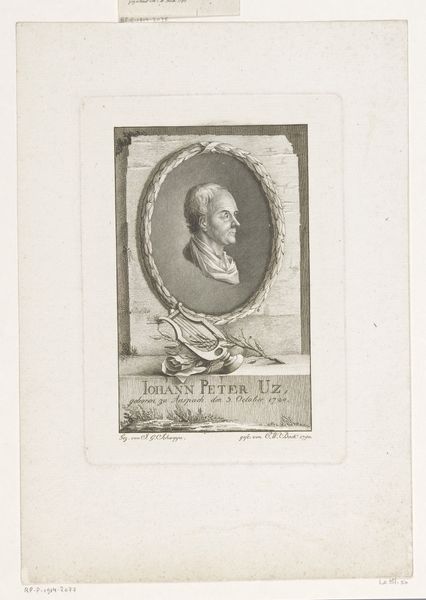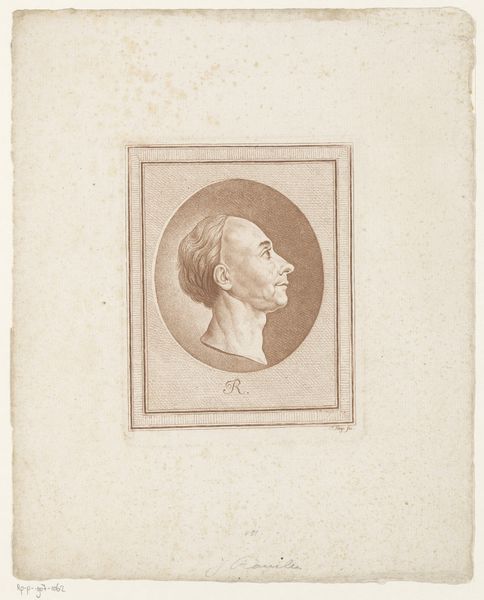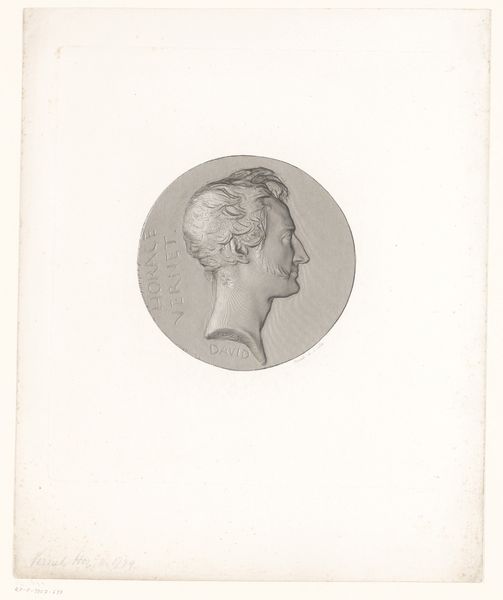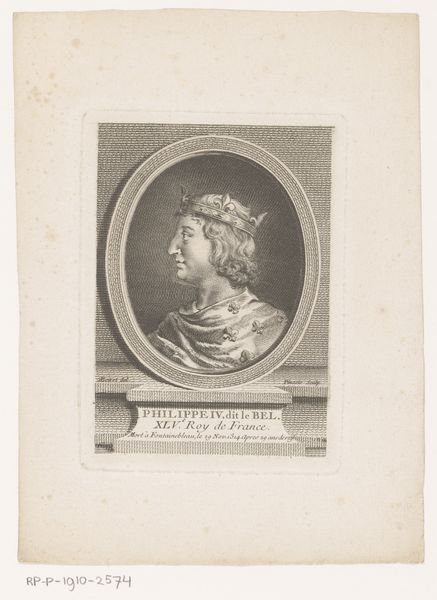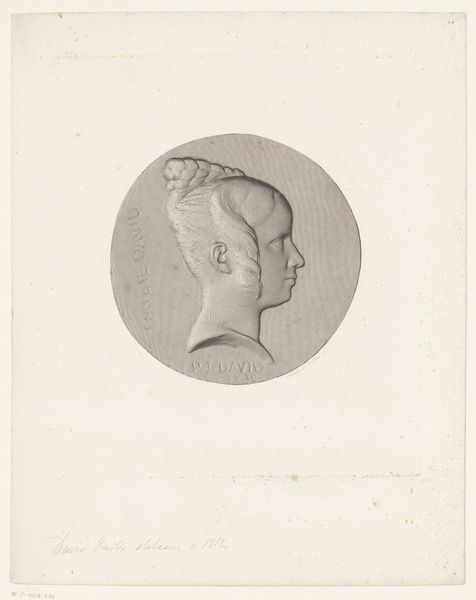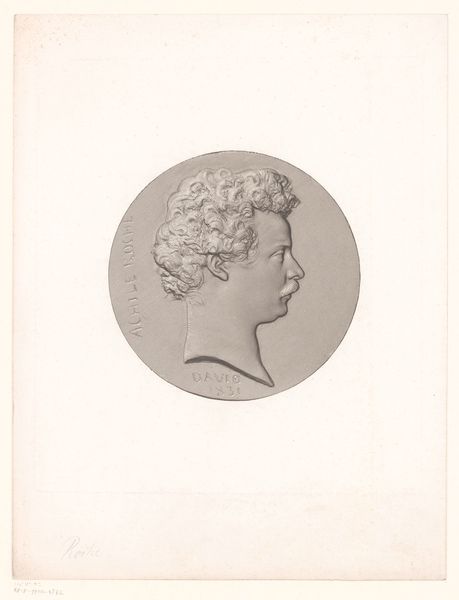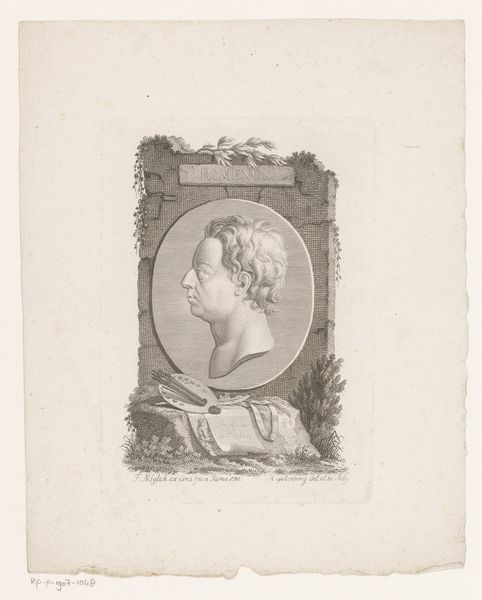
print, engraving
#
portrait
#
neoclacissism
# print
#
history-painting
#
academic-art
#
engraving
Dimensions: height 222 mm, width 173 mm
Copyright: Rijks Museum: Open Domain
Editor: This is a print from 1751 titled "Portret van Felice Salimbeni," created by Georg Friedrich Schmidt, currently at the Rijksmuseum. It’s an engraving. I’m struck by how it mimics classical sculpture in print form. How do you interpret this work through its materials and creation process? Curator: For me, the magic lies within the medium itself. Look closely: Schmidt’s engraving transforms sculpture into something reproducible. Printmaking democratizes the portrait, moving it away from elite patronage and the labor-intensive work of sculpting marble. Think of the social context – this image becomes accessible for a wider audience. Editor: So, the engraving democratizes the image. Does the choice of material, the copper plate and the ink, tell us anything about the artistic intent? Curator: Absolutely. Copper engraving requires precise skill and control of tools. It signifies a conscious effort to reproduce details accurately and efficiently. The work is almost mechanical in execution – we're getting a step further away from unique craftsmanship. How does this reproduction change your perception of Salimbeni’s status? Editor: It's interesting to think about how Neoclassicism usually aims for an elevated ideal, yet this printed form almost… industrializes it? Makes me wonder if this tension was intentional, revealing changing attitudes to labor and class. Curator: Precisely. The material conditions reveal how ideas about artistry and social standing were being challenged and redefined through accessibility and reproduction. Editor: I see the layers now; the choice of engraving over painting completely alters the message and impact. Curator: And that subtle shift highlights how even seemingly traditional art forms participated in shaping evolving social structures. Considering material and process helps to unearth the less obvious details about the creation of the portrait itself and it's context within history.
Comments
No comments
Be the first to comment and join the conversation on the ultimate creative platform.
